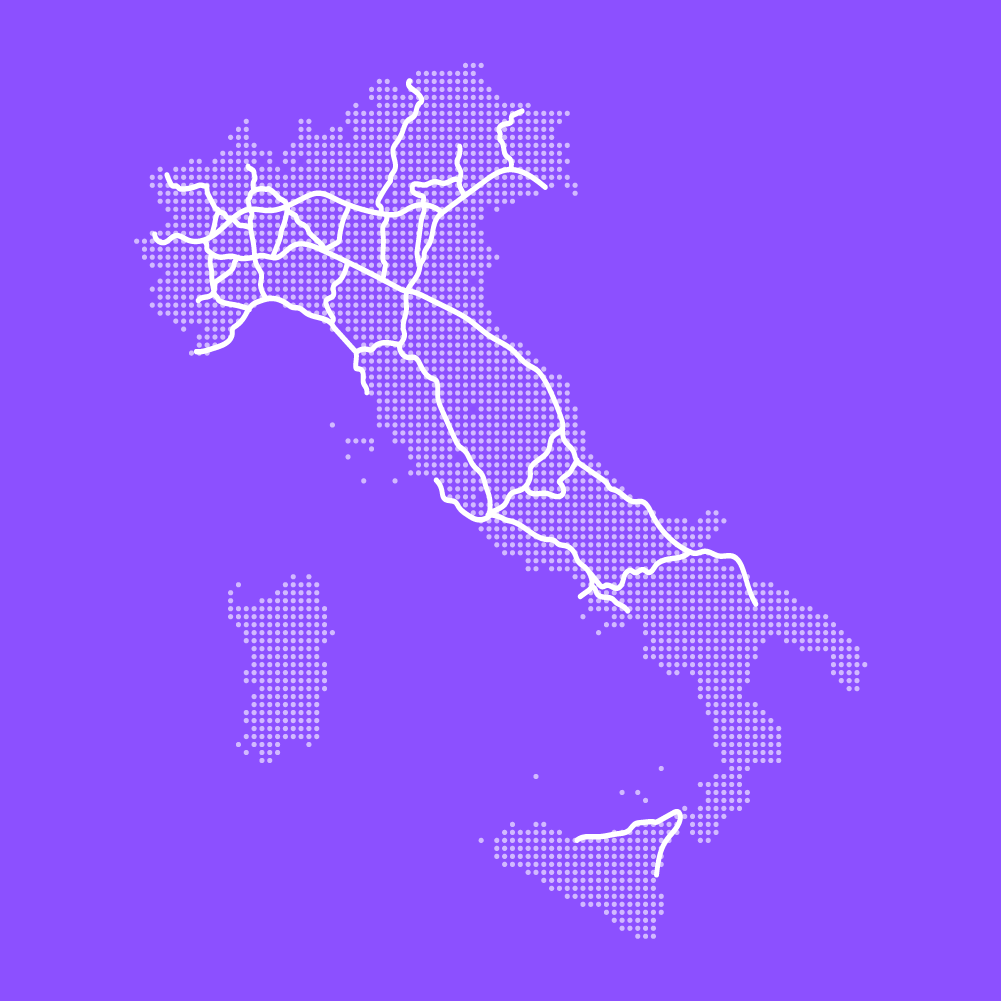Bridges and tunnels: a heritage to regenerate
Hundreds of tunnels, bridges and viaducts are needed to cross hills, valleys, and streams. Regenerating maintenance interventions on this important heritage and preventive maintenance of more recent assets have become urgent.
Italy is a restless land which keeps changing for it is always on the move. Three quarters of its territory is constituted by mountains and hills, while the rest is constituted by plains where the sometimes troubled rivers and streams run. This is what makes it special and what leaves first-time visitors astounded; for the same reasons, providing it with a modern motorway network has been an unprecedented engineering challenge in Europe. Italian motorways are scattered with hundreds of tunnels, bridges and viaducts needed to cross hills, valleys, and streams. Moreover, in a country where road transport is predominant for both passengers and goods, the infrastructure, which was mainly built decades ago, requires constant maintenance and frequent works to respond to the intense use of the network.
The numbers of bridges and tunnels along the Italian motorway network
No other country has so many: the bridges along Italian motorways total 1,200 kilometres (many more than Germany’s 260 or Spain’s 229), with the number of assets being four times the EU average. If we look at tunnels, Italy alone has half of all European tunnels, totalling 500 kilometres. Of the total 6,000 kilometres of the Italian toll motorway network, almost 2,000 are constituted by bridges and tunnels, which insiders call “works of art”. This definition suits the complex assets that were incredibly innovative, not to mention visionary, when they were built. To give one example out of the many, the sequence of bridges along the old route of the Autostrada del Sole, the so-called Panorama. The arches of the Poggettone and Pecora Vecchia viaducts, designed by Arrigo Carè and Giorgio Giannelli, the 164-metre-long ordinary reinforced concrete single arch of the bridge over the Aglio torrent by Guido Oberti, the Romita viaduct for which Silvano Zorzi chose a trefoil arch to avoid resting on the hydroelectric basin below.
However, this important heritage is ageing: most of the bridges, viaducts, tunnels and the motorway network itself were built between 1960 and 1980. In addition, the network has to cope with the stress caused by an average daily traffic of 40,000 vehicles per section (compared to 27,000 in France, for example), and with a particularly fragile territory and its hydrogeological instability. Suffice it to say that two thirds of the landslides in Europe occur in Italy and that this figure is likely to increase with the extreme events caused by climate change.
Motorway works: a plan for monitoring bridges and tunnels
The collapse of the Morandi bridge in Genoa in 2018 clarified the need for urgent and profound renewal of the motorway monitoring plan.
It has become imperative to start a campaign of investigations on bridges, viaducts and tunnels considering the wear and tear caused by ageing, but also extreme weather events and the increasingly evident climate change, which affect road transport infrastructure. High temperatures deform pavements and threaten the tightness of bridge joints. Floods and landslides can strain the foundations. To limit damage and consequences, it is necessary to develop coping strategies ranging from risk assessment to analysis of the condition of the assets and the entire infrastructure in a hydrogeological and hydraulic context subject to significant changes. If appropriate, bridge decks will be replaced, piers and foundations strengthened, heat dissipation systems installed, and tunnel linings replaced. These are the main examples of regenerating maintenance operations that will be necessary in the coming years to extend the useful life of bridges and tunnels to prevent ageing.
Alongside regenerating maintenance, preventive maintenance on newer assets will become increasingly important to efficiently plan future interventions and reduce costs. For instance, through sensors and data analysis, the condition of bridges, viaducts, tunnels, pavements and road markings will be monitored in order to promptly identify gaps and defects and efficiently plan maintenance, minimising traffic disruptions.
Investment in motorway works to preserve a great heritage
Monitoring all the bridges and tunnels of the Italian network will be challenging and securing those at risk of obsolescence will require a substantial investment. The precise amount is difficult to quantify due to a rapidly changing regulatory framework and economic context, but it would be equal to a few percentage points compared to the overall value of a network which – if it were to be built from scratch – can be estimated at around 1,200 billion euro. Investing in this project would benefit traffic, the environment, and create employment opportunities across various sectors, including the construction one. According to certain estimates, for every euro invested in the motorway works plan, an additional two euros are generated indirectly through the purchase of goods and services, as well as the activation of supply chains. This, in turn, generates new income, consumption, and contributes to overall economic growth. These benefits go hand in hand with the main goal, which is making the motorway network safe for the next 50 years by extending the useful life of hundreds of bridges and tunnels.























